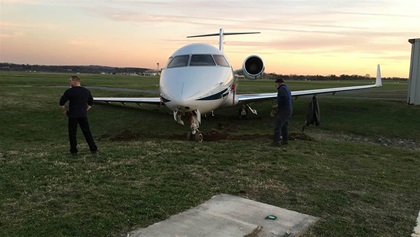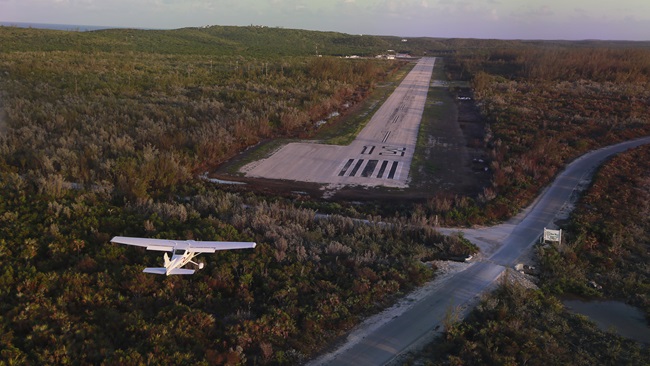Turn square—or sink
A vote for square turns
By J. Mac McClellan
Next time you’re taxiing onto or off the runway, or turning at a taxiway intersection, look down at the edge of the pavement. There’s a good chance you’ll see tire tracks going through the dirt or grass.

 Some lucky pilot screwed up and got away with it only leaving tracks. The airplane main wheels didn’t sink in when they went off the edge of the pavement. But not every pilot is so fortunate.
Some lucky pilot screwed up and got away with it only leaving tracks. The airplane main wheels didn’t sink in when they went off the edge of the pavement. But not every pilot is so fortunate.
It was my leg in the right seat of a brand-new Beechcraft King Air 350i with only ferry time from the factory. I was head-down writing times and fuel burns when the pilot in the left seat turned off the runway and cut the corner. The big main gear tires sank into the mud, and the airplane oozed to a halt. The left-side tires were below grade. The airplane couldn’t be moved forward or backward.
It took hours of jacking and filling the hole with lumber to get the big turboprop out. And then the brakes had to go to the shop to be disassembled, inspected, and cleaned to get the mud out. The new airplane was out of service for several days. The only lucky aspect was that the propeller tips didn’t hit the ground, because it sloped away from the pavement.
We all cut corners when taxiing the trainers we learned to fly in. Or in the piston singles we moved up to. But when you taxi a larger turbine airplane you must remember that the main gear is farther behind you.There is an obvious and always successful technique to avoid dropping a wheel in the dirt. Make square taxi turns.
We all cut the corner while driving. It’s faster than making a square turn, and it requires less control movement. And cutting the corner in a car seldom brings grief.
And we all cut corners when taxiing the trainers we learned to fly in. Or in the piston singles we moved up to. But when you taxi a larger turbine airplane you must remember that the main gear is farther behind you. Just because the nose wheel, and your butt in the seat, pass over the pavement doesn’t mean the main gear follows the same path.
At large airports the taxiways are typically wide enough that pilots can cut the corner in most business turboprops and jets and stay on the pavement. But at smaller airports with narrow taxiways, the margin can be very small.
I routinely fly to a busy one-runway airport in southern Ohio where there is a wide mix of traffic. Aircraft of every type from a Gulfstream 650 to Piper J–3 use the airport. In the last three weeks two bizjets and a turboprop—operated by a company that buys a lot of TV advertising time—cut corners and ended up stuck in the mud. We may all hate the term pilot error, but there’s nothing else you can call these embarrassing and damaging mistakes.
To make a square taxi turn and be assured your main wheels stay on the pavement, you need to slow to almost a stop nearing the intersection. Then, stay straight until the nosewheel is about half the airplane’s wheelbase dimension beyond the intersection center. At that point a tight, slow-speed turn will result in the nosewheel ending up on the new centerline stripe and the inboard main gear staying well on the pavement.
Making square turns slows your taxi progress, but let me assure you, nothing is slower than sticking wheels into the mud.
J. Mac McClellan was an editor of Flying magazine from 1976 to 2010. He has 12,000 hours and has flown virtually every GA and business aviation airplane in production.


